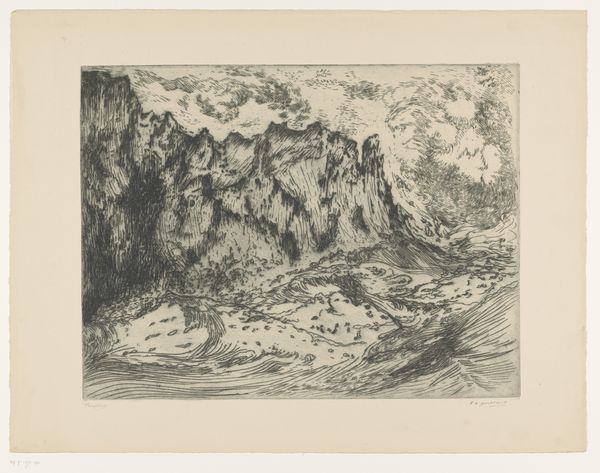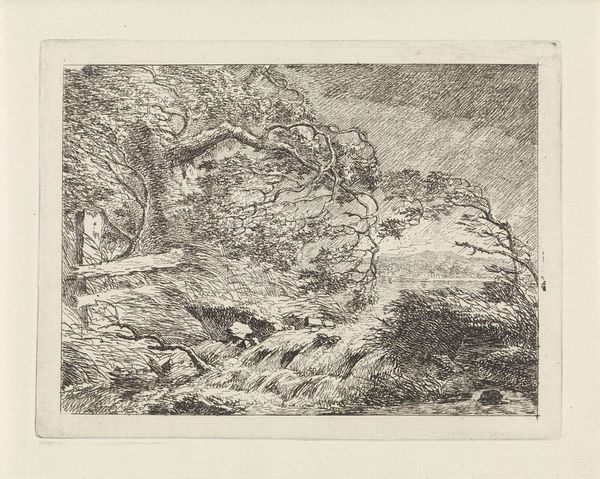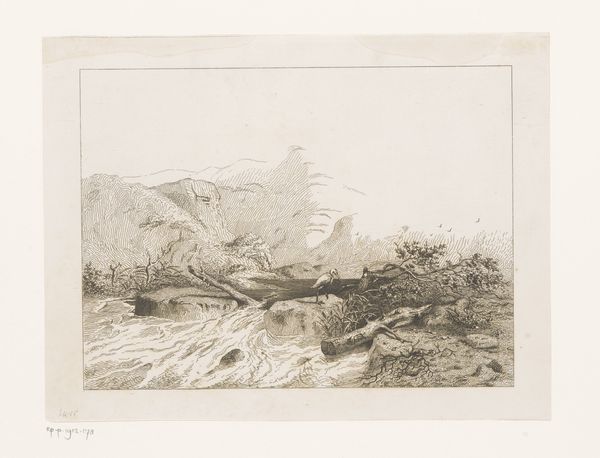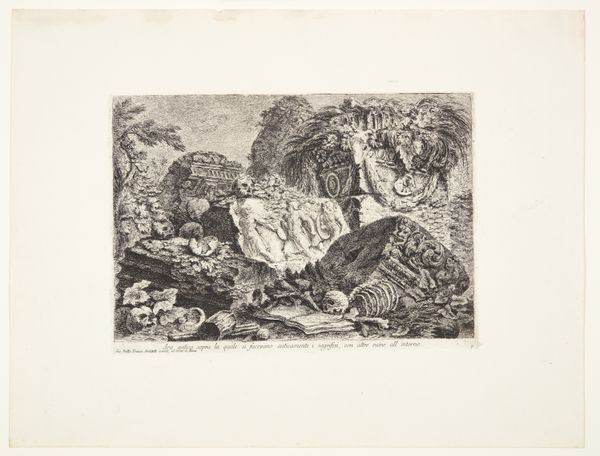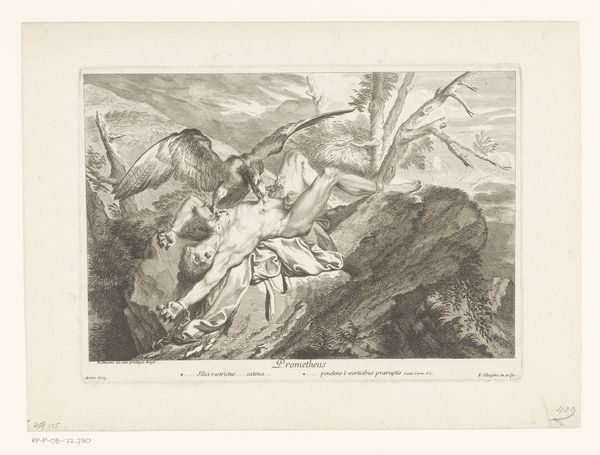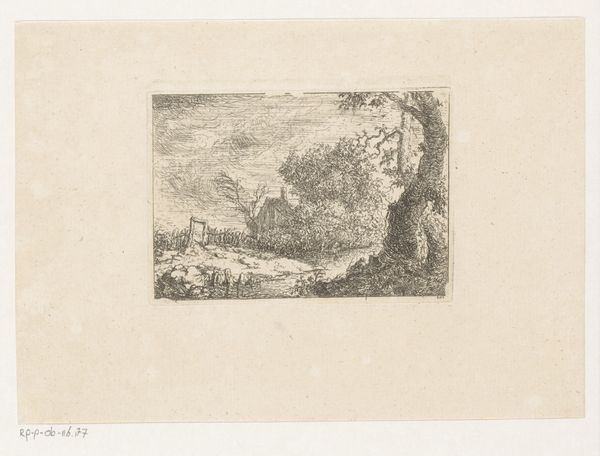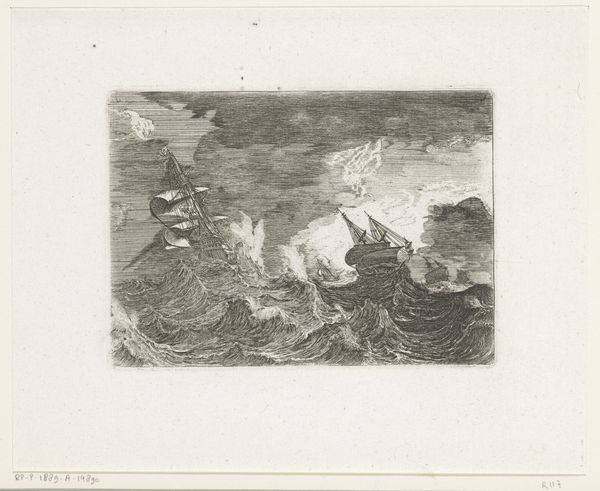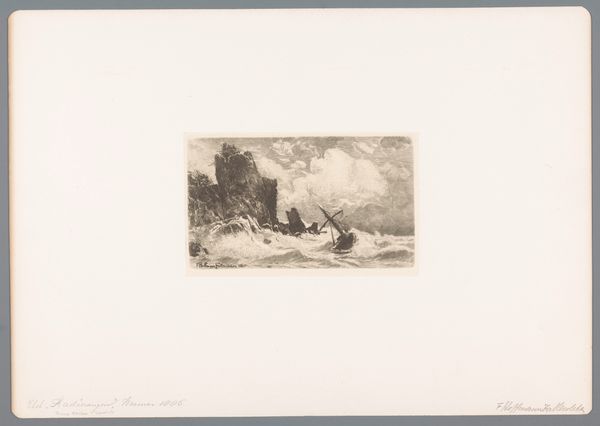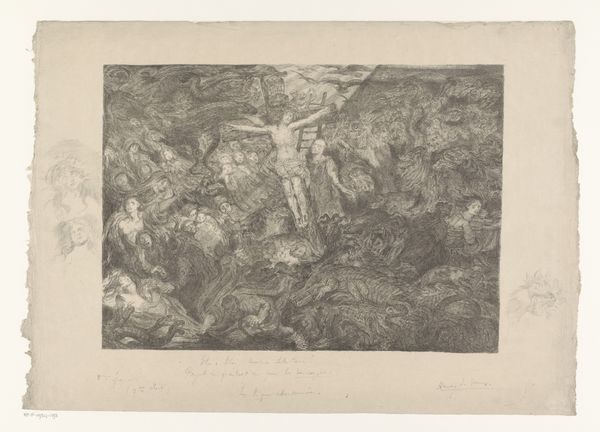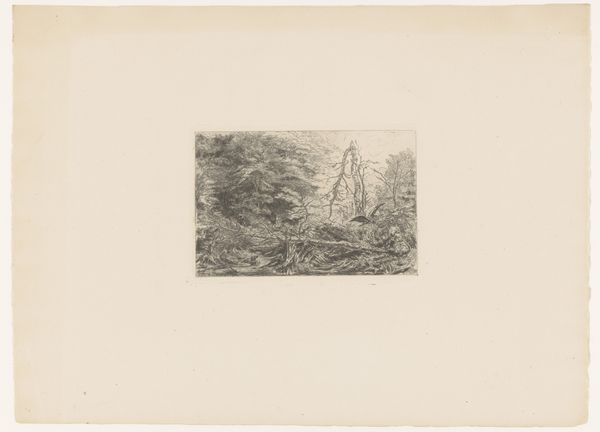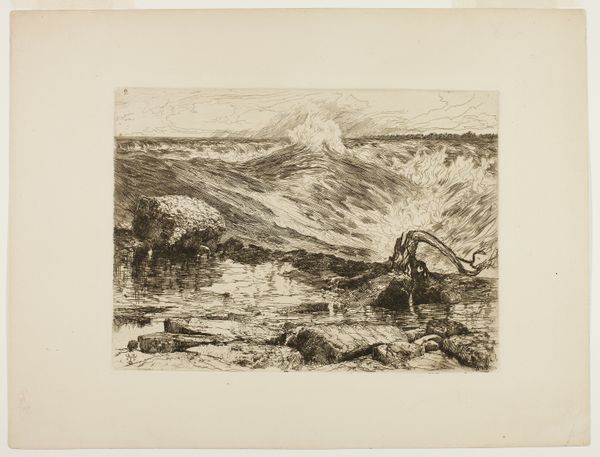
#
pencil drawn
#
light pencil work
#
pencil sketch
#
old engraving style
#
etching
#
pencil drawing
#
ink drawing experimentation
#
pen-ink sketch
#
sketchbook drawing
#
pencil work
Dimensions: height 66 mm, width 95 mm
Copyright: Rijks Museum: Open Domain
Curator: Looking at this small drawing by Henri François Schaefels, titled "Driemaster slaat tegen de rotsen"—"Three-master Crashes Against the Rocks," from sometime between 1837 and 1879—I immediately get a feeling of controlled chaos, would you agree? Editor: Absolutely. It's incredibly dynamic despite being monochromatic. The use of line to convey both the violence of the storm and the precariousness of human existence is striking. You know, shipwrecks weren't just tragedies; they were a potent symbol in 19th-century art, reflecting anxieties about industrialization and the power of nature. Curator: Yes, anxieties that run pretty deep. It's fascinating how Schaefels manages to capture the raw energy of the sea with what seems like a fairly simple technique. The wild hatching that creates the waves gives the impression that everything is unstable. Look how fragile the ship appears, practically impaled on the rocks, and look at the helpless figures scrambling onshore. It's almost comical, like a play, as if it's saying this too shall pass. Editor: It definitely speaks to the sublime, that Romantic era obsession with nature's overwhelming power, but I see something more cynical here too. Think about the colonial context—ships representing trade, conquest, exploitation… a shipwreck could be read as a critique of those systems, a kind of poetic justice enacted by nature itself. Or is that perhaps going a little too far? Curator: It’s something to consider. For me, though, I'm stuck on the etching quality. It creates a dramatic mood and a sense of almost desperate urgency in what we are seeing. It's not a pretty picture, is it? This feels closer to a scream. Editor: You're right. And the figures aren't idealized heroes, they’re just trying to survive. And isn't it interesting how he gives as much weight to the water as he does the rock? Curator: It suggests the sea is as powerful as any land, always pushing, always trying. So, thinking about this drawing overall... the detail and immediacy capture you; its simple strokes remind you of the brutal but somehow expected fight for human survival. Editor: Indeed. Seeing it through this lens brings such a new appreciation, or perhaps I should say understanding, to Schaefels’ stark statement. It's a visceral portrayal that's as relevant today as it was back then, I suspect.
Comments
No comments
Be the first to comment and join the conversation on the ultimate creative platform.
